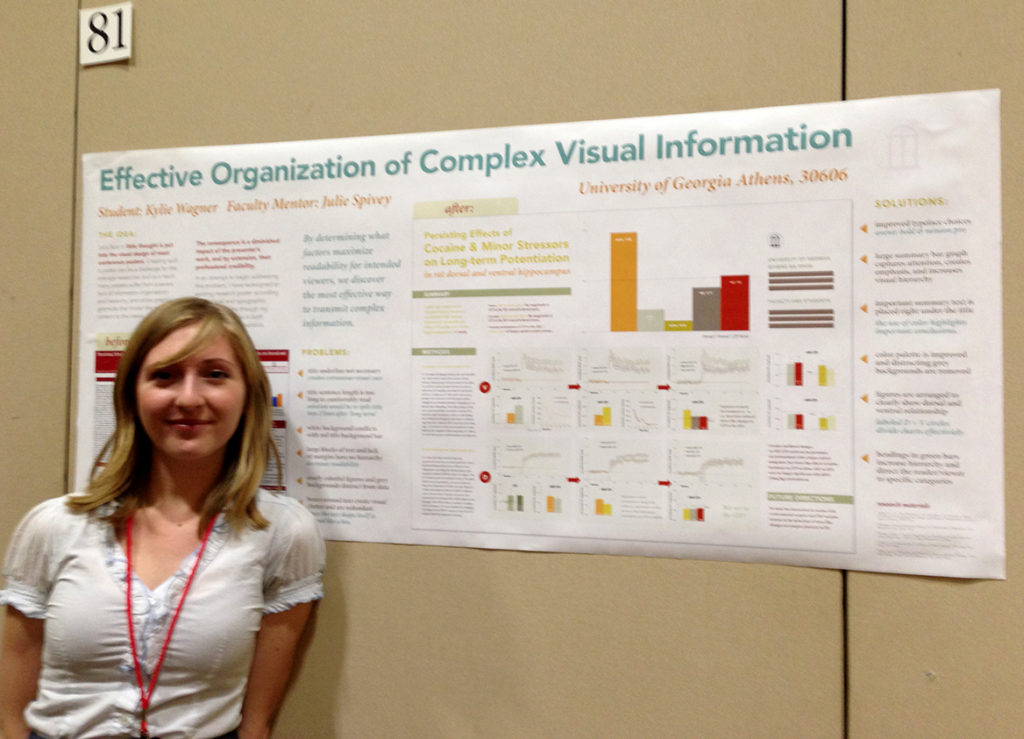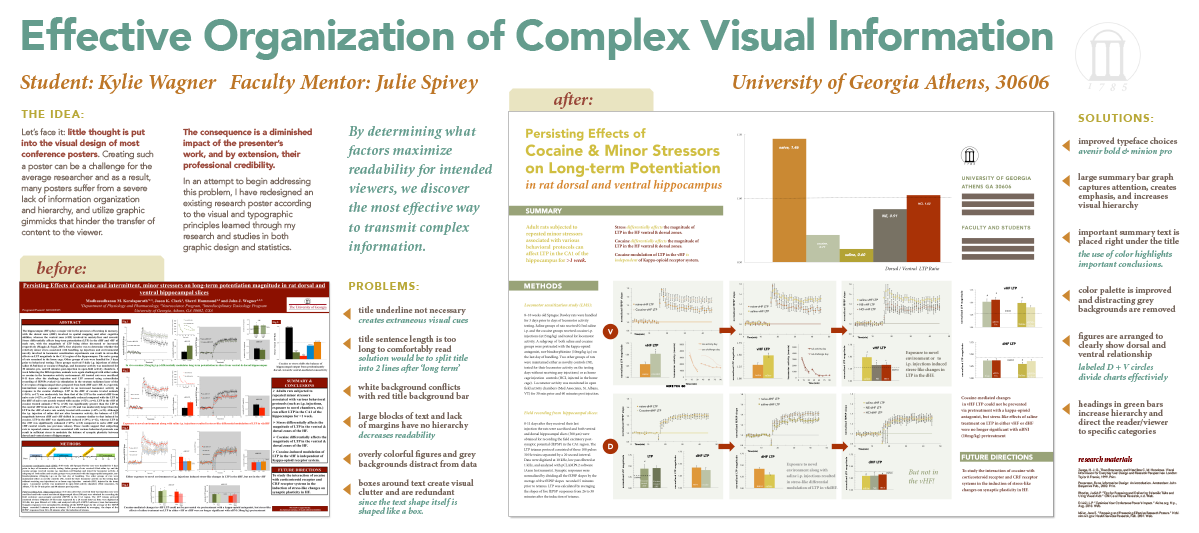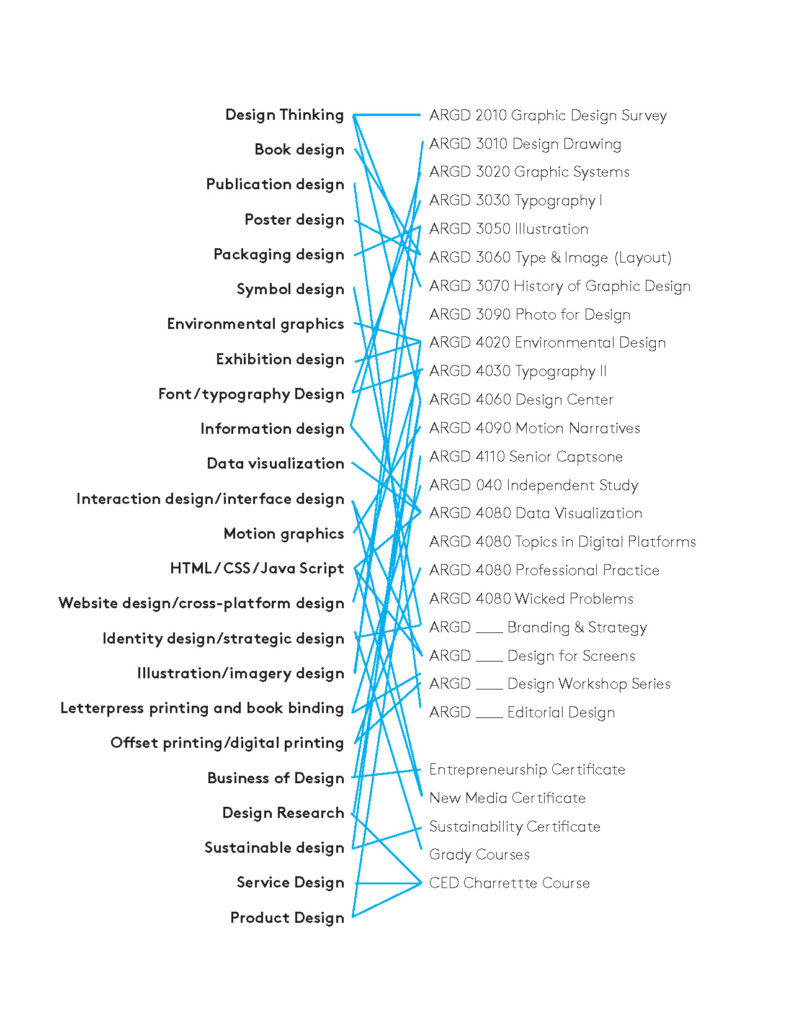Effective Organization of Complex Information
Kylie Wagner, a graphic design major minoring in statistics, aimed to explore not only data visualization but to tackle it within the context of the (typically poorly visually considered) scientific conference poster. To increase legibility, readability, hierarchy of information, Kylie applied effective design principles, thoughtful typography, a more efficient composition, and improved visualization of data to redesign an existing neuroscience conference poster. She then included the redesigned poster in her own symposium poster, explaining the problems, process and solutions.
Kylie presented her poser at the 2015 UGA CURO symposium on campus (Center for Undergraduate Research Opportunities) and was then asked by the head of the Honors program to present her findings to the undergraduate honors research course the following term.





